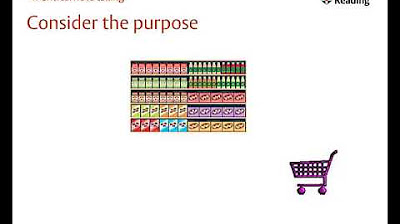Consecutive Note Taking-Part 1
Summary
TLDRIn this instructional video, Edgar Hialgo Garcia from Orion Language Services teaches memory and note-taking techniques for effective consecutive interpreting. He emphasizes the importance of developing memory before note-taking, highlighting the need for effective listening and concentration. Visualization is introduced as a powerful memory technique, urging students to engage all senses and make themselves the protagonists of the stories they are interpreting. The video demonstrates how to apply these techniques through a story about Mary Salgado, and further explains the use of units of meaning or 'chunking' for note-taking when details are involved, to aid in recalling complex messages.
Takeaways
- 👂 Effective listening skills and concentration are crucial for developing memory in consecutive interpreting.
- 🧠 Understanding the main idea of a message is essential for memory retention and successful interpreting.
- 🎭 Visualization is a powerful memory technique that involves all senses to create a vivid mental image.
- 🌟 Being the protagonist in the visualization helps to create a memorable and personal connection to the information.
- 🏡 Associating the visualization with significant personal elements, like childhood home or close relatives, enhances memory.
- 🎥 Imagining scenarios with all senses engaged helps to create a 'little movie' in the mind for better recall.
- 👩🎤 Even if it feels odd, embodying the character in the story (like imagining oneself as the opposite gender) can aid memory.
- 🔍 Relating the story elements to familiar places or experiences can make the memory more robust.
- 📝 Note-taking is an essential tool for aiding memory, especially when dealing with detailed or lengthy information.
- 🔑 Units of meaning or 'chunking' help in breaking down information into manageable parts for effective note-taking and memory.
Q & A
What is the main focus of the lesson in the transcript?
-The main focus of the lesson is on memory and notetaking techniques for consecutive interpreting.
Why is memory development emphasized before notetaking in consecutive interpreting?
-Memory development is emphasized before notetaking because relying on notetaking can sometimes hinder memory, and it's crucial to first develop the ability to remember messages effectively.
What are the key components to develop effective listening skills in interpreting?
-The key components to develop effective listening skills include being able to hear what is being said, concentrating, and understanding the main idea being conveyed.
How does visualization as a memory technique work in the context of interpreting?
-Visualization as a memory technique involves engaging all senses—sight, smell, taste, and sound—and placing oneself as the protagonist in a scenario that includes significant and familiar elements to aid in memory retention.
What is the significance of being the protagonist in your visualization scenario?
-Being the protagonist in your visualization scenario makes the memory more impactful and easier to recall because it creates a personal and unusual connection to the information, which aids in memory retention.
Why is it suggested to relate the story elements to familiar things in memory techniques?
-Relating story elements to familiar things helps in memory techniques because it anchors the new information to existing memories, making it easier to recall.
What is the term used for organizing information into manageable parts to aid memory in notetaking?
-The term used for organizing information into manageable parts to aid memory in notetaking is 'units of meaning' or 'chunking'.
How does the addition of details to a story affect the notetaking process?
-The addition of details to a story requires the use of notetaking as a special tool to aid memory, focusing on key words and phrases that represent the most important ideas.
What can be omitted in notes while taking notes for interpreting, according to the transcript?
-In notes, certain words or details that are understood from the context or are not essential to the main idea can be omitted to focus on the most important information.
How does the example of Mary Salgado's story illustrate the application of memory and notetaking techniques?
-The example of Mary Salgado's story illustrates the application of memory and notetaking techniques by showing how to break down the narrative into units of meaning and key details, which can then be used to recall the story effectively.
Outlines

هذا القسم متوفر فقط للمشتركين. يرجى الترقية للوصول إلى هذه الميزة.
قم بالترقية الآنMindmap

هذا القسم متوفر فقط للمشتركين. يرجى الترقية للوصول إلى هذه الميزة.
قم بالترقية الآنKeywords

هذا القسم متوفر فقط للمشتركين. يرجى الترقية للوصول إلى هذه الميزة.
قم بالترقية الآنHighlights

هذا القسم متوفر فقط للمشتركين. يرجى الترقية للوصول إلى هذه الميزة.
قم بالترقية الآنTranscripts

هذا القسم متوفر فقط للمشتركين. يرجى الترقية للوصول إلى هذه الميزة.
قم بالترقية الآنتصفح المزيد من مقاطع الفيديو ذات الصلة
5.0 / 5 (0 votes)






